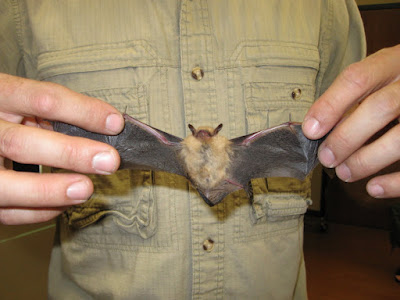
BUMBLEBEE VISITING MY COSMOS
Pollinators, especially bees, are what pioneering environmentalist Rachel Carson called a keystone species. Remove the keystones and the whole edifice collapses.
Here is a partial list of our pollinators -- hummingbirds, bats, butterflies, sweat bees, carpenter bees, mason bees, bumblebees and honeybees. (The New Internationalist)
Last week I found this dead bee wholly intact and in perfect condition. It was lying on my front porch. I moved the bee to a better observation level and wondered what made this bee just collapse? I am sure many factors could contribute to the death of this bee. But it made me think of the Colony Collapse Disorder (CDD) that was discovered in 2006.
I searched online for some possible answers. Some bees are thought to be declining from loss of habitat, industrial farming, and the use of herbicides and pesticides. The pesticide neonicotinoids made by the German company Bayer is approved for 140 crops in 100 plus countries. The pesticide disrupts the bees nervous system. It has special bans in France and the UK. Also, hives travel on trucks to pollinate orchard after orchard for commercial crop production causing stress within the hives.
The USDA acknowledges that pesticides are part of the reason for CDD. Yet, pesticides are still used on crops here in the U.S. There is no ban on neonicotinoids use here in the good ole U.S. of A.
Carson's warning about the serious results of pollinator decline appears to be in the works in this country. Many pollinators are now experimenting decline. A more succinct word for decline is death.
In 2006-2007 bats were discovered to be dying at a rapid pace from what appeared to be fungus related. Experts have dubbed the fungus the white nose syndrome (WNS). Not all scientists agree that the fungus is the problem. Bats are critical to the control of much of our insects that destroy our crops as well as the control of mosquito populations.
WNS has spread from New York to some places in Canada as well as eight other states. Mortality rate from the WNS is close to 100 percent. Scientists do not have a clue as to the reason this unknown fungus is perhaps killing the bats. Some research is being conducted to identify and halt its spread but as of yet nothing has surfaced to help the situation. To me, it appears that we need more researchers.
I find it interesting that both CDD and WNS appeared in 2006 here in the U.S.
I predict that more pesticides will come into use as a result of the loss of our bats. And where would that lead us?
Great changes would occur through the loss of our pollinators. Changes to the natural world as well as to our sense of nature.
I have just touched on a part of this disaster of the wholesale decline of pollinators. I have listed below some informative sites that you should check out.
USGS National Wildlife Center -- excellent site -- includes the WNS Occurrence by County map for both Canada and the U.S.
The New Internationalist Article -- Why are Bees Dying
WORLD CHANGING Good article about bee decline research
Field and Stream I am not a hunter but thought this article worth reading. Discusses the crucial symbiotic relationship between birds and bees -- also has very informative comments from readers.
And last but not least is an insightful book, The Forgotten Pollinators by Stephen L. Buchmann and Gary Paul Nabhan -- an important book to read if you are interested in the subject.




It is to weep. Good post.
ReplyDeletebarefootheart -- yes it is a time to weep -- barbara
ReplyDeleteIt's all connected. If we ignore that simple fact, we are all in peril.
ReplyDeleteVicki --
ReplyDeleteWith your comment in mind -- if Rachael Carson is right, we are all headed toward a "decline."
-- barbara